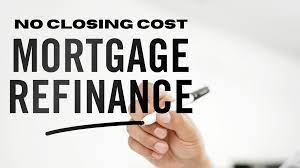Mortgage refinancing is succeeding over other loans due to multiple reasons. Homeowners typically save money by refinancing when the interest rate is lower than they are currently paying. Cash-out refinancing may allow borrowers to use their home equity to spend on house renovations or debt consolidation. Furthermore, they provide options to switch from an adjustable-rate mortgage to a more predictable fixed-rate mortgage. Regardless of the motivation, it is essential to consider transaction costs, including whether no-closing cost refinance might be the right choice.
What Is a No-Closing Cost Refinance?
Mortgage refinancing isn’t that different from securing a home loan in the first place. For example, the homeowner can expect to pay the closing costs based on the type of loan. This will include the following:
- Government recording costs
- Appraisal fees
- Debt record charges
- Origination costs
- Survey charges
- Tax service fees
- Lawyer charges
- Underwriting fees
According to Freddie Mac, refinancing mortgages generally include transaction costs of about $5,000. Like other home mortgages, these payment charges will be scheduled when you sign the documents to finalize a new home loan.
With no-closing cost refinance, you don’t need to pay for these costs (but this does not mean that there are no transaction costs at all). Lenders can calculate these costs in two ways instead of paying them at the time of closing:
- Charge a higher mortgage rate on the new loan
- Transfer the closing costs to the principal amount of a new loan
How Does a No-Closing Cost Refinance Work?
If your creditor offers no-closing cost refinancing, you may have a choice: pay a higher interest rate or include billing costs in the new loan. Here is how each method works and how they affect your costs.
Pay higher mortgage interest rates
Choosing a no-closing-cost mortgage with a higher interest rate means higher monthly payments that impact the total amount you pay during the loan term.
For example, suppose your 30-year or 4.2% mortgage has 25 years left, and you currently owe $250,000. Since you want to reduce your monthly settlements, you decide to refinance a new 30-year loan at an interest rate of 3.2%. The transaction cost is estimated to be $5,000, which you choose to pay out of your pocket. The new credit reduces your current monthly repayment by $141, from $1,222 to $1,081.
Now assume you cannot or do not want to complete the transaction out of your pocket, but you agree to a 3.7% interest rate. If so, your monthly payment will be only $49 less than your old home mortgage.
Option 2: Transfer the closing costs to the loan
Transferring the closing costs to the new loan means combining them with the principal loan amount. Although the lender may offer you the same interest rate as your previous adjustment charges, this option will increase your monthly payment and reduce your total savings.
Using the same $250,000 mortgage plan as above, suppose you roll the final cost of $5,000 to the new mortgage at a 3.2% interest rate. (You are now borrowing $255,000 instead of $250,000.) Choosing this option will reduce your monthly payment by $120 from your previous mortgage. This is $21 less per month than you pay for closing costs out of your pocket.

Benefits and Drawbacks of a No-Closing Cost Refinance
No closing cost refinancing has both benefits and limitations for most homeowners. Here are some factors you should consider while taking out a no-closing cost refinance.
Pros
- Refinancing at your own expense, without paying closure costs: Refinancing without transaction costs allows you to keep cash for other purposes.
- Cash-out house equity: You can use a no-closing-cost refinance to borrow equity from your property and then use it for renovation or other expenses. Additionally, you can use any cash-out refinancing to do this; no transaction fee loan means you have more money at the end.
- Lower mortgage rates can still save you money: Even if the refinancing interest rate is slightly higher than the amount you paid upfront, there are no closing fees. You can still save money during the loan term due to the difference between your new and old loan interest rates.
Cons
- You will not avoid closing costs: Refinancing loans without closing costs does not mean these costs are eliminated; you don’t need to pay them upfront.
- Monthly payment might be higher: Depending on the new loan term you choose and the interest rate you are interested in, your monthly installment with no-closing cost refinancing may be higher than your current loan.
- It may take longer to break even: The break-even point illustrates the point at which any cash you paid toward closing prices, either directly or indirectly, is recovered in interest savings on a home loan.
The Bottom Line
No-closing cost refinancing appeals to homeowners who want to refinance a mortgage without spending a large amount of money. Whether no-closing cost refinancing makes sense for you; will depend on numerous factors, including:
- How much cost you can expect to save on interests
- The interest rate is based on the loan and your income
- How long do you intend to stay at home
If you consider no-closing cost refinance or traditional mortgage refinancing, take the time to compare the different mortgage rates. This can help you find the best mortgage terms to refinance your home.

